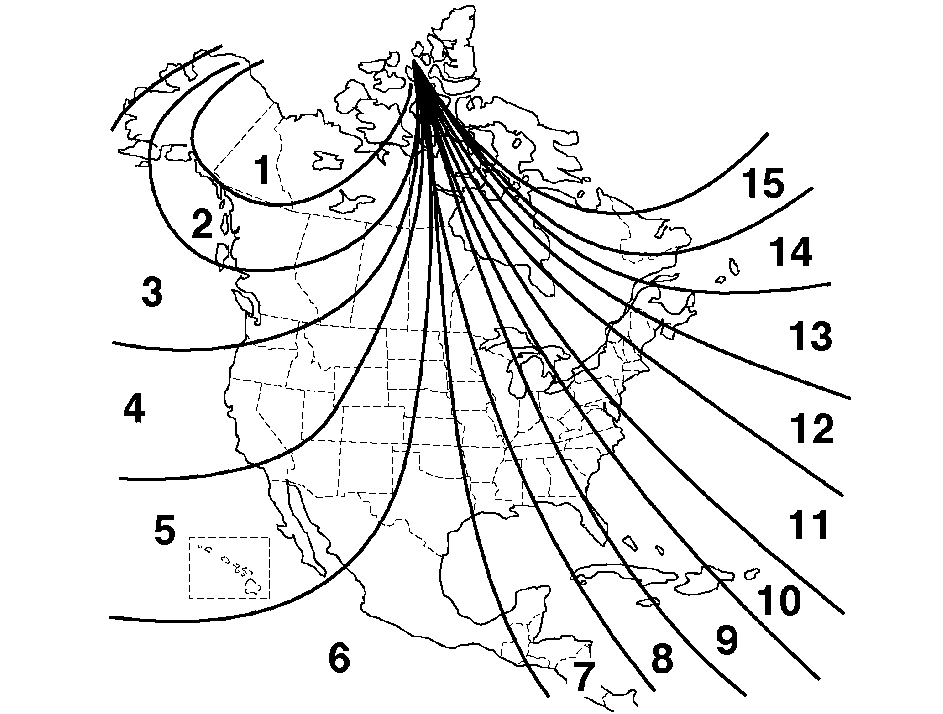
If your vehicle has a DIC, it also is equipped with an electronic compass. As with all compasses, this unit senses the earth's magnetic field to show the direction the vehicle is pointing.
The earth's magnetic field is not always the same direction as true north as we know it. So, you must enter a zone number to tell the compass the difference between magnetic and actual north. This tells the compass where in the country you are driving.
The compass remembers your zone, so you only have to change it if you drive to a new zone on the map. The compass adjusts only a small amount for each zone, so you may not notice a difference if you drive from one zone to the next one, until you cross several zones.
Choosing Your Zone Number

Locate your zone number on the above map. If your number is different than the one shown when you turn the key on, follow the steps to change your zone number.
If you live on the line, you can pick the zone area you are most likely to drive in. (In Alaska, use Zone 9 or 10. In Hawaii, use Zone 7.)
Changing Your Zone Number
- Press MODE to display COMPASS CALIBRATION.
- Press SELECT to display RESET CHANGES ZONE.
- Press RESET until your number appears.
- Press MODE to exit the COMPASS CALIBRATION MODE and store the new zone number. When the MODE button is pressed, the DIC will return to the VEHICLE DATA mode.
Calibrating the Compass
All electronic compasses need to know the magnetic profile of your vehicle. This is called calibration and is done automatically by your compass. However, if you would like to manually calibrate the compass, the following instructions will show you how.
Sometimes, strong magnetic fields can affect the compass. If the compass display does not show a direction, and CALIBRATE COMPASS is displayed on the DIC, try calibrating the compass as follows:
- Drive the vehicle to an open, flat area.
- Press MODE to display COMPASS CALIBRATION.
- Press SELECT to display PRESS RESET TO RECALIBRATE and then press the RESET button.
- The display will change to SLOWLY DRIVE IN SMALL CIRCLES. Drive the vehicle in small circles. Don't drive faster than 10 mph (16 km/h).
- Continue to drive in circles until the CALIBRATION COMPLETE message is displayed on the DIC and a direction is shown for the compass.
Your compass should be calibrated. You will know this when a direction is shown and the CALIBRATE COMPASS message is no longer displayed.
Compass Accuracy
Your compass may show different headings around bridges, power lines, large metal objects and steep hills. This is normal and is true of compasses in general.
If you put large metal objects like golf clubs in the trunk they could affect accuracy. If the affect is minimal, the compass will adapt to these objects over time.
If you use an antenna with a magnetic base, it is best to mount it away from the center of the trunk near the rear window.
The rear defog system can affect accuracy, and the compass corrects for the rear defog. However, if the rear defog is turned on while making sharp turns, the accuracy may be off. When you turn the rear defog off again, the accuracy returns to normal.
Be aware that metal objects are sometimes buried in the ground. They can affect accuracy and you may not know they are there. As an example, many concrete roads have metal reinforcements inside.
Also, if you drive with the trunk open, this could affect accuracy and could decalibrate the compass.
